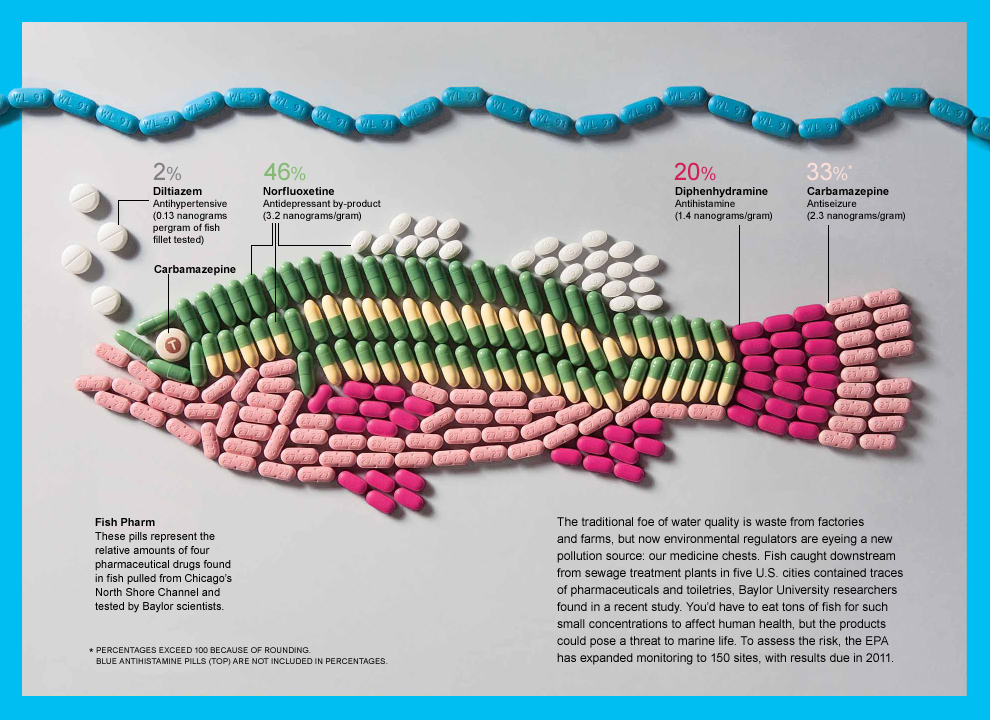Over the past few decades the use of pharmaceuticals has increased dramatically, enabling a 10-year rise in the average life expectancy of the United Kingdom over the last 50 years. However, we rarely consider the other implications of such use outside our own wellbeing. Studies suggest that when we consume drugs they are not 100% metabolised by our bodies, i.e. there are trace amount which we do not use and are instead excreted. Alongside this, the by-products of many drugs are also released by our bodies, entering wastewater treatment facilities. These treatment plants are not able to remove the trace chemicals or hormones within the water, thus releasing the contaminated water into rivers and other water bodies.
Why should we care?
We already know that drugs within livestock and food can have an adverse effect upon the environment, such as the near-extinction of vultures in India which resulted from anti-inflammatory drugs in cattle feed. The newest threat to the ecosystem is the pharmaceutical industry; from which many of these trace chemical and molecules are released into water bodies and ingested by other organisms. In this instance, only a tiny amount of the drug may be present, however this increases as predators eat organisms below themselves in the food chain. Studies have only started to observe this effect due to the low concentrations of drugs, which are unknowingly leaking into the freshwater ecosystems and affecting the resident fish populations.
One of the most recent and shocking findings within fish populations is the effect of pharmaceuticals is the presence of high levels of chemicals and hormones from the contraceptive pill. This causes male fish populations to exhibit female characteristics because of higher level of oestrogen-like chemicals, growing eggs in their testes. The individuals also denature their typical characteristics, leading to a higher mortality rate of fish due to increased predation.
What does this mean for ecosystems?
These chemicals and hormones within the water not only change the physical characteristics but they also change the behavioural patterns of the fish. One study in Ontario identifies how the flathead minnow fish population has been wiped-out as a result of a change in their nature and inability to hunt for food. These species are found lower in the food chain; therefore a knock-on effect is observed higher up the food chain due to the lack of food for predatory species, in this case the top predator (trout) was found to have reduced in population by as much as 42%. Ultimately, this could cause problems for humans due to food shortages within an ever-growing global population.
The future effects upon the ecosystem prove problematic due to a lack of hormone-free alternatives as a long-term method of contraception. Lina Nikoleris highlights this where she says:
“The impact that human beings have on the environment is an important issue, so I do not only want to study the ecological aspect of how fish are affected by hormones, but also look at the way we use hormonal birth control. Technical solutions are not enough to purify our water.”
James Deed
Image: oceancrusaders.org

